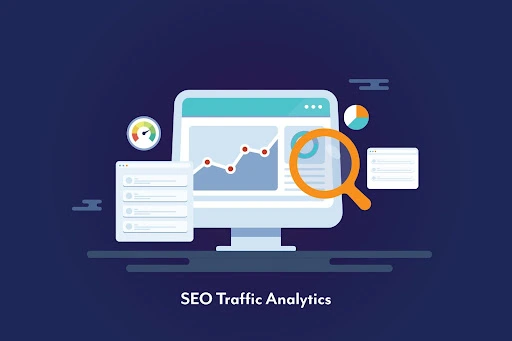Understanding SEO Analytics: A Beginner’s Guide

In the present era of digitalization, simply owning a website is no longer sufficient. It has become indispensable to optimize your website in order to secure a high rank on the search engine results pages (SERPs) for relevant keywords. This optimization process is commonly known as Search Engine Optimization (SEO), and it plays a pivotal role in increasing the traffic on your website and generating leads. However, how can you ensure that your SEO efforts are bearing fruit? This is where the concept of SEO analytics enters the picture.
What is SEO Analytics?
The practice of SEO analytics involves the monitoring, measurement, and analysis of your website’s SEO performance. This entails employing various tools to gather data on a multitude of metrics, such as organic traffic, keyword rankings, backlinks, and much more. By meticulously scrutinizing this data, you can gain valuable insights into the effectiveness of your SEO strategies and make decisions grounded in data to enhance your website’s performance.
This guide is aimed towards beginners and aims to provide an overview of the fundamental aspects of SEO analytics. It will enlighten you on the meaning of SEO analytics, the mechanisms that drive it, and its potential to bolster your website’s performance.

SEO analytics is essential as it helps you to gauge your website’s performance in SERPs. By keeping track of your website’s performance, you can identify which areas require improvement and make informed decisions to optimize your website for search engines. As a result, you can achieve higher rankings in SERPs, increase organic traffic, and generate more leads and conversions.
How SEO Analytics Works
SEO analytics works by collecting and analyzing various metrics, such as organic traffic, keyword rankings, backlinks, and others. You can use tools such as Google Analytics, SEMrush, or Ahrefs to collect and analyze this data.
Organic traffic is one of the primary metrics that SEO analytics tools track. It refers to the number of visitors to your website that come from search engines. By keeping track of organic traffic, you can analyze how many people are finding your website through search engines and how this number changes over time.
Keyword rankings are also crucial metrics that SEO analytics tools track. They indicate how well your website ranks for specific keywords in SERPs. By monitoring your keyword rankings, you can analyze which keywords are driving traffic to your website and how well you are ranking for those keywords compared to your competitors.
Backlinks are another important metric that SEO analytics tools track. They refer to the number of links from other websites that point to your website. By monitoring your backlinks, you can analyze how many other websites are linking to your website and how this number changes over time. Backlinks are significant because they signal to search engines that other websites consider your content to be valuable and relevant.

Here’s How to Use SEO Analytics
After reviewing the fundamentals of SEO analytics, let’s explore how you can use it to enhance your website’s performance. Below are some tips:
- Monitor organic traffic: By keeping track of your organic traffic, you can see how many people are finding your website through search engines and how this figure changes over time. If your organic traffic is decreasing, it may indicate that your SEO efforts need improvement.
- Track keyword rankings: By monitoring your keyword rankings, you can see which keywords are driving traffic to your website and how well you are ranking for those keywords compared to your competitors. This data can help you identify opportunities to enhance your rankings for specific keywords.
- Analyze backlinks: By analyzing your backlinks, you can see how many other websites are linking to your website and how this number changes over time.
- Identify areas for improvement: By analyzing your SEO analytics data, you can recognize areas of your website that require improvement. For instance, if you’re not ranking well for a specific keyword, you may need to optimize your content or build more backlinks. If your bounce rate is high, you may need to improve your website’s user experience.
- Set goals and track progress: It’s crucial to set goals for your SEO efforts and monitor your progress over time. By setting specific, measurable, and achievable goals, you can ensure that you’re making progress towards improving your website’s performance.
- Use SEO analytics tools: There are numerous tools available that can help you gather and analyze your SEO analytics data. Some of the most popular tools include Google Analytics, SEMrush, and Ahrefs.
- Stay up to date with SEO best practices: SEO best practices are continuously evolving, and it’s critical to stay current with the latest trends and techniques. By staying informed, you can ensure that your SEO strategies are effective and up to date.
In conclusion, SEO analytics is a critical aspect of any SEO strategy. By gathering and analyzing data on your website’s performance, you can obtain valuable insights into what is working and what isn’t. This information can help you make data-driven decisions to optimize your website for search engines, resulting in higher rankings in SERPs, increased organic traffic, and more leads and conversions.
Remember, SEO is an ongoing process that requires continuous attention and optimization to ensure that your website is performing at its best. By using SEO analytics to monitor your website’s performance and identify areas for improvement, you can stay ahead of the competition and achieve your business goals.
